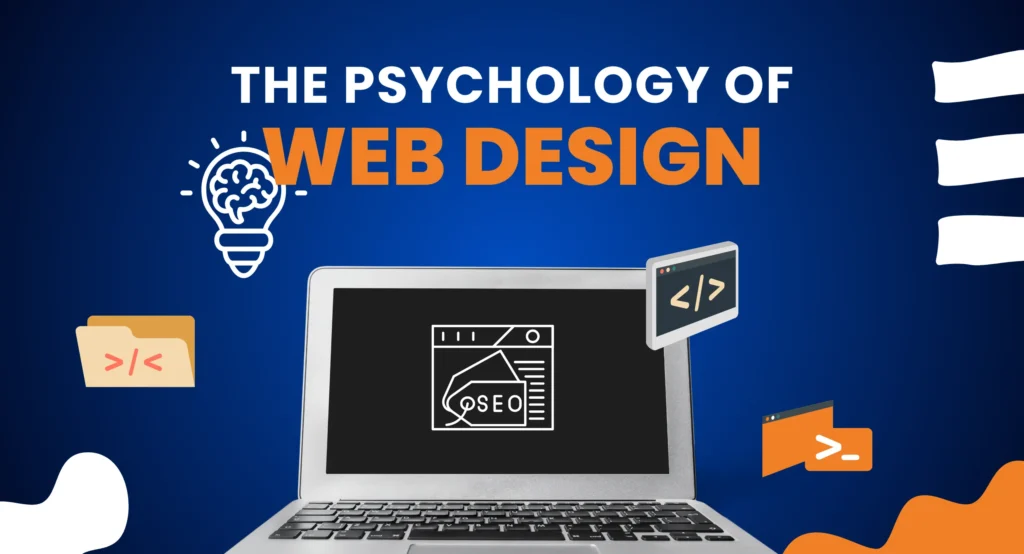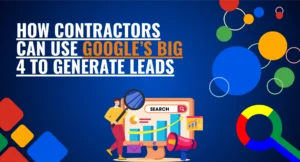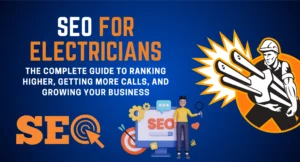Introduction
Why Your Website Matters More Than Ever
In today’s fast-paced digital world, a company’s website is often the very first interaction a potential customer has with their brand. Whether you run a small local business, an e-commerce store, or a large corporation, your website acts as your digital storefront.
Just as shoppers make quick judgments when they walk into a physical store, visitors form instant opinions the moment they land on your website. This is where the art and science of web design come into play.
The Speed of First Impressions
Studies show that it takes users only about 50 milliseconds (0.05 seconds) to form an impression of a website. That means before a visitor reads your headline, scrolls through your services, or even looks at your pricing, they already know whether they trust your business enough to continue exploring.
This rapid judgment is why web design goes beyond aesthetics; it’s rooted in psychology, perception, and user behavior.
The Risks of Poor Web Design
Many businesses mistakenly assume that having a functioning website is enough. But in reality, a poorly designed site can push potential clients away faster than having no site at all. A cluttered layout, outdated colors, or confusing navigation can subconsciously tell visitors, “this business isn’t professional,” even if the services offered are top-notch.
On the other hand, a sleek, user-friendly website communicates trust, reliability, and credibility without a single word being spoken.
Web Design as a Psychological Tool
The psychology of web design is about understanding how people think, feel, and behave when they interact with your website. It’s about creating digital experiences that guide users toward the actions you want them to take — whether that’s booking a consultation, making a purchase, or filling out a contact form.
Businesses that ignore this connection risk losing valuable leads, while those who embrace it can transform their sites into powerful conversion tools.
What You’ll Learn in This Blog
This blog will dive deep into the psychological principles that influence how people perceive and interact with websites. We’ll explore how first impressions are formed, the role of color and typography, the importance of user experience, and actionable strategies to turn visitors into paying clients.
By the end, you’ll have a clear understanding of how to apply these insights to your own web design — and why doing so is critical for growth in 2025 and beyond.
The Science Behind First Impressions in Web Design
How Fast Judgments Are Made
When it comes to websites, first impressions matter more than you might think. In fact, researchers at Google discovered that users judge a website’s visual appeal within 1/20th of a second. These snap judgments are largely emotional and subconscious.
Visitors often can’t explain why they like or dislike a site — they just know. For businesses, this reality highlights a critical truth: your web design sets the tone for the entire customer relationship.
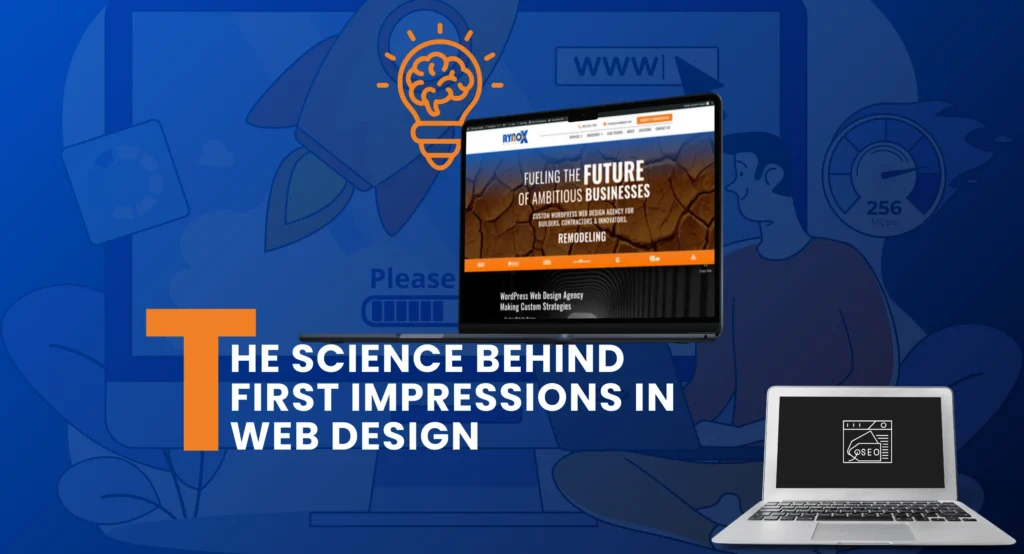
Why First Impressions Are So Powerful
Human brains are wired to process visual information at lightning speed. In evolutionary terms, this ability helped people quickly assess whether something was safe or dangerous. Today, it translates into evaluating websites.
- A clean, minimalist site with professional visuals may convey reliability and authority.
- A cluttered, outdated site may signal neglect, poor service, or lack of professionalism.
- A slow-loading page can instantly frustrate users, making them leave before exploring further.
This is known as the halo effect: when people see something visually appealing, they assume the service or product must also be good.
The Role of Visual Hierarchy
Visual hierarchy organizes information so users can quickly identify what’s most important. Eye-tracking studies show that users often scan websites in an F-shaped pattern, paying attention to headings, subheadings, and bold elements first.
Smart web design highlights essential information like:
- What the business does.
- Why it’s trustworthy.
- How to take the next step (e.g., calling, booking, or filling out a form).
Consistency Builds Trust
A consistent look across all pages builds credibility. Mismatched colors, fonts, or layouts create subconscious doubt. In contrast, cohesive branding makes visitors feel they’re dealing with a professional and reliable business.
Big brands like Apple or Nike follow strict style guides for this reason. Smaller businesses can achieve the same effect by committing to consistent design rules.
Case Example: Landscaping Websites
Imagine two landscaping companies:
- Company A’s site loads instantly, uses natural tones, displays real project photos, and places a clear “Book Your Free Estimate” button above the fold.
- Company B’s site loads slowly, uses outdated stock images, and buries the contact form deep within the navigation.
Even if Company B offers better services, most visitors will choose Company A because their web design created a stronger first impression.
The Role of User Experience (UX) in Web Design
Why UX Matters More Than Looks
When most people think of web design, they picture colors, images, and typography. While these are important, they represent only half of the equation. The other half is user experience (UX) — the way visitors interact with your site, how easy it is to navigate, and how quickly they can find what they need.
A beautifully designed website that frustrates users won’t convert. But a site that’s simple, intuitive, and pleasant to use can turn casual visitors into loyal customers. Good UX isn’t just about function — it’s about psychology. It shapes how people feel about your brand and whether they trust you enough to take the next step.
Hick’s Law and the Problem of Too Many Choices
Psychologists have long studied decision-making, and one principle that applies directly to web design is Hick’s Law. It states that the more choices a person has, the longer it takes them to decide. In a digital environment, this delay often leads to frustration and abandonment.
Think of a homepage with ten different buttons competing for attention: “About Us,” “Shop Now,” “Contact,” “Blog,” “Services,” “Gallery,” “Testimonials,” “FAQ,” “Special Offers,” and “Book a Call.” The visitor’s brain has to process all these options, making it harder to choose the right one.
Now imagine a homepage with three clear paths: “Shop Now,” “Our Services,” and “Contact Us.” The design is simple, the hierarchy is clear, and the decision is easy. This is UX at its best — guiding the visitor smoothly instead of overwhelming them.
Navigation and Flow
Users should never have to guess where to go on a website. Intuitive navigation is one of the most important aspects of UX. A well-structured menu, clear headings, and logical page flow reduce friction and make the experience effortless.
Here are a few UX best practices:
- Keep menus simple with no more than 5–7 main items.
- Use clear labels (“Contact” instead of “Get in Touch with Our Team of Experts”).
- Make CTAs visible by placing them in predictable locations, like the top-right corner or the bottom of a service section.
- Create a logical journey — homepage → services → case studies → contact.
When visitors feel like they’re being guided, not forced, they’re more likely to engage.
The Psychology of Ease
Humans naturally gravitate toward the path of least resistance. If your website feels confusing or forces users to think too hard, they’ll leave. But if your web design feels natural, people will stay longer and take action. This concept is known as cognitive fluency — the ease with which our brains process information.
High cognitive fluency = trust, comfort, and conversions.
Low cognitive fluency = doubt, frustration, and bounces.
Color Psychology in Web Design
How Colors Influence Emotions and Behavior
Color isn’t just decorative; it’s psychological. Different colors trigger different emotions, and smart businesses use this to influence how users perceive their websites. In fact, studies show that up to 90% of snap judgments about products are based on color alone.
When applied correctly, color choices in web design can strengthen brand identity, communicate trust, and drive action.
The Meaning of Common Colors in Web Design
Here are some widely recognized color associations:
- Blue: Trust, professionalism, security (used by banks, healthcare, and tech companies).
- Red: Energy, urgency, excitement (often used for clearance sales or limited-time offers).
- Green: Growth, eco-friendliness, calm (popular with health, wellness, and environmental brands).
- Black: Luxury, sophistication, authority (frequently used by high-end fashion and lifestyle brands).
- Orange/Yellow: Optimism, creativity, friendliness (often used for playful or innovative brands).
Choosing the right palette depends on your brand identity and target audience.
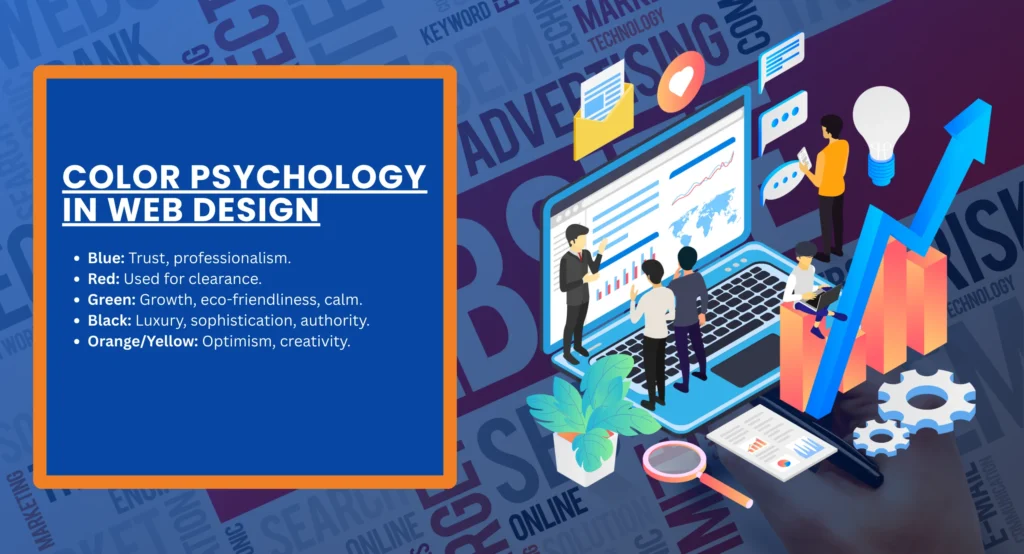
Contrast and Call-to-Action Buttons
Color also plays a major role in conversions. Call-to-action (CTA) buttons, such as “Book Now” or “Get a Free Quote,” need to stand out visually. A common mistake businesses make is blending CTA buttons into the overall design. While aesthetically pleasing, this reduces effectiveness.
For example:
- A blue website with a blue “Contact Us” button will cause users to overlook it.
- A blue website with a bright orange button creates visual contrast, drawing immediate attention.
Psychologically, contrast creates urgency and signals importance. That’s why many successful businesses test different CTA button colors to see which generates the highest conversions.
Consistency is Key
Using too many colors can confuse visitors and dilute your brand. Instead, stick to two to three core colors across your site. This consistency creates a sense of order, which the brain interprets as professionalism and trustworthiness.
Case Example: E-Commerce Store
Consider an online clothing boutique:
- Version A: Uses a pastel color palette with pale buttons that fade into the background. Users browse but rarely add items to their cart.
- Version B: Uses the same pastels for branding but highlights the “Shop Now” button in bold black with white text. This button stands out immediately and guides users to take action.
The difference? Color psychology and contrast in web design.
Applying Psychology to Web Design
Understanding psychological principles is only the first step. The real power comes when you apply these insights directly into your web design process. In this section, we’ll explore the practical ways psychology can be leveraged to create a website that not only looks beautiful but also converts visitors into loyal clients.
1. Using Visual Hierarchy to Guide Attention
One of the most important aspects of web design is visual hierarchy — the way elements are arranged to naturally guide the eye. Users don’t read websites word for word; instead, they scan. This makes it essential for businesses to design layouts that highlight what matters most.
- Headline Placement: Position your primary headline at the top, using larger fonts and bold typography. This signals importance and grabs attention instantly.
- Strategic Use of White Space: Proper spacing around buttons or calls-to-action (CTAs) draws attention and reduces clutter.
- Focal Points: Use contrasting colors for CTAs, like “Get a Free Quote” or “Book a Consultation,” so they stand out.
By applying these techniques, businesses ensure that their most persuasive messages are not overlooked but instead are the first things users see.
2. The Role of Colors in Persuasion
Color psychology is a cornerstone of successful web design. Every shade evokes an emotional response, and selecting the right palette can help communicate brand values and influence user actions.
- Blue: Conveys trust, security, and professionalism, making it popular for financial or corporate websites.
- Red: Sparks urgency and excitement, often used for sales or promotions.
- Green: Associated with growth, health, and sustainability, ideal for eco-friendly or wellness brands.
- Neutral Tones: Shades of gray, black, and white establish elegance and modern simplicity.
Successful brands often stick to a consistent color scheme across their website and marketing channels, ensuring that every visual touchpoint strengthens brand recognition.
3. Typography That Speaks to Users
Fonts are more than just text styles; they’re a psychological signal. Choosing the right typography in web design can affect how visitors perceive your brand.
- Serif Fonts: Suggest tradition, reliability, and professionalism (great for law firms or educational institutions).
- Sans Serif Fonts: Represent modernity and simplicity (ideal for tech companies and startups).
- Script Fonts: Add a personal, creative, or elegant flair (commonly used by lifestyle or boutique brands).
Beyond the font style, designers should pay attention to line spacing, readability, and font pairing to create a smooth user experience.
4. Building Trust Through Design Consistency
A website must feel cohesive for visitors to trust it. Psychological research shows that inconsistency can cause users to feel uncertain or suspicious. In web design, this means ensuring that every element feels like part of a whole.
- Navigation Menus: Should be simple, predictable, and consistent across all pages.
- Branding Elements: Colors, logos, and fonts must remain uniform.
- Content Layout: Pages should follow a logical structure so users don’t feel lost.
When a site feels organized and professional, visitors are more likely to view the brand as credible — an essential step in converting them into paying clients.
5. Leveraging Emotional Triggers in Calls-to-Action
Calls-to-action (CTAs) are where design and psychology intersect most directly. Strong CTAs use emotional triggers to push visitors toward taking the next step.
Examples of emotional CTAs in web design include:
- “Claim Your Free Consultation Today” (creates urgency).
- “Join Thousands of Happy Clients” (builds trust through social proof).
- “Start Your Journey to Success” (appeals to aspirational emotions).
By pairing emotionally driven language with visually distinct buttons, designers maximize the chances of converting traffic into tangible leads.
Strategies for Converting Visitors into Clients
At the end of the day, a visually appealing site is only part of the equation. True success in web design comes when psychology, functionality, and strategy work together to convert casual visitors into long-term clients. Below are some proven strategies you can apply.
1. Optimize for User Experience (UX)
No matter how attractive a website looks, if it’s difficult to navigate, visitors will leave. User experience should always be at the heart of web design.
Key UX strategies include:
- Fast Loading Speeds: A delay of just 3 seconds can cause users to abandon a site. Optimizing images, using caching, and minimizing code are critical.
- Mobile Responsiveness: More than half of global traffic comes from smartphones. Your site should adapt seamlessly to smaller screens.
- Clear Navigation: Menus should be simple, predictable, and uncluttered, helping users reach what they need in just a few clicks.
The smoother the user experience, the higher the chances of retaining visitors and guiding them toward conversions.
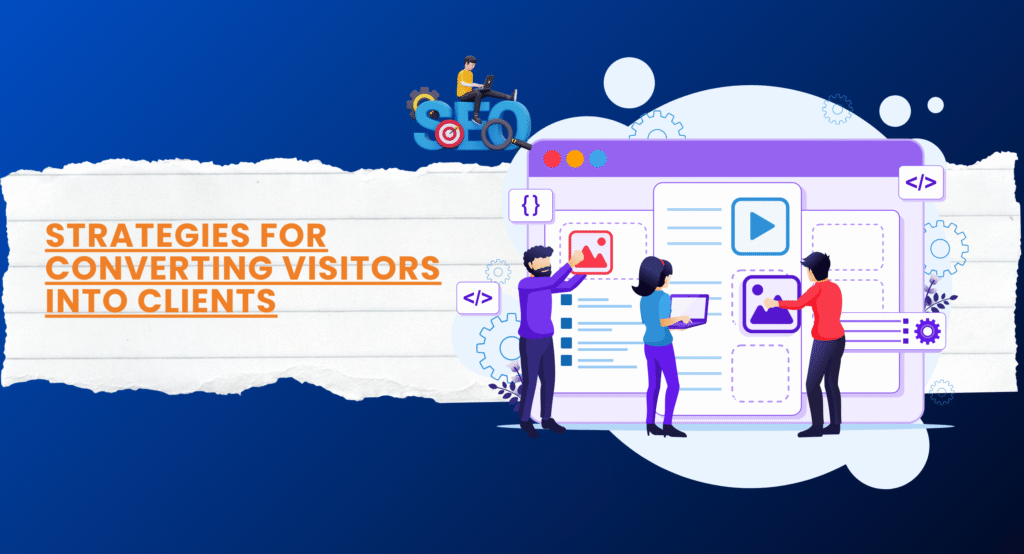
2. Harness the Power of Social Proof
People naturally trust the opinions of others. Social proof taps into this psychological bias by showing potential clients that others have already had positive experiences with your business. In web design, this can be showcased in several ways:
- Client Testimonials: Short, authentic reviews build trust.
- Case Studies: Real-world examples highlight the value you provide.
- Logos of Past Clients: Recognizable brands give instant credibility.
- Ratings and Awards: Displaying industry recognition positions you as an authority.
By incorporating social proof into your web design, you ease hesitation and reinforce credibility.
3. Personalization and Targeted Messaging
Modern web design isn’t one-size-fits-all. With the help of data and analytics, businesses can tailor their websites to match the behavior and preferences of individual visitors.
Examples of personalization in action:
- Dynamic Content: Display different offers based on a visitor’s location or browsing history.
- Smart Recommendations: Show related services or blog posts to keep users engaged.
- Personalized CTAs: Use messaging that speaks directly to user intent, such as “Find the Right Plan for Your Business” instead of a generic “Contact Us.”
Personalization enhances relevance, which directly impacts conversion rates.
4. Integrating Conversion-Centered Design
Conversion-centered web design focuses on minimizing distractions and making the path to action clear. This approach blends psychological triggers with design best practices.
Effective strategies include:
- Above-the-Fold CTAs: Place your primary call-to-action at the top of the page where users can’t miss it.
- Minimal Distractions: Reduce unnecessary links or popups that might divert attention.
- Visual Flow: Use arrows, shapes, or imagery to guide visitors’ eyes toward key actions.
The goal is to create a direct and compelling journey from landing on the site to completing a desired action.
5. Continuous Testing and Refinement
Psychology provides principles, but every audience is unique. That’s why testing is essential in web design.
- A/B Testing: Compare two versions of a page to see which drives more conversions.
- Heatmaps: Track where users click and scroll to identify engagement patterns.
- Analytics: Monitor bounce rates, session times, and conversion paths to refine your approach.
By constantly experimenting and iterating, you ensure that your design adapts to evolving user behavior and market trends.
Conclusion: The Power of Psychology in Web Design
Psychology is not just an academic concept — it’s a practical tool that can transform your web design from a digital brochure into a powerful client-conversion engine. By understanding how users think, what they feel, and why they act, you can build websites that resonate on an emotional level while guiding visitors toward meaningful actions.
From visual hierarchy and color psychology to trust signals and personalized experiences, the principles explored here prove one thing: effective web design is about more than aesthetics. It’s about creating an online environment that inspires confidence, reduces friction, and motivates action.
When businesses leverage psychology in their web design, they don’t just attract visitors — they build trust, authority, and lasting client relationships.

